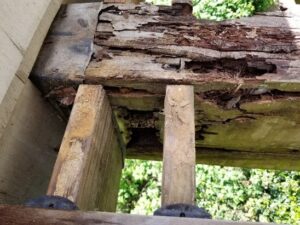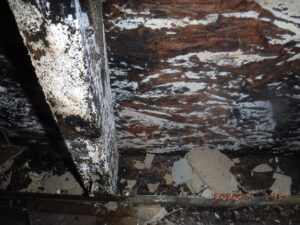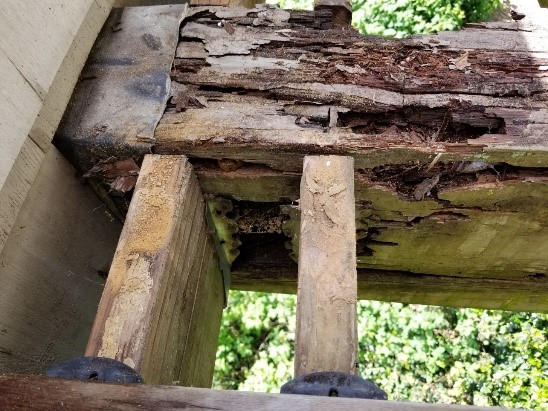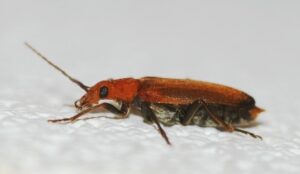Fungi
- Outbreaks of dry rot and wet rot start in similar ways. The mature fruiting bodies of wood-destroying fungi that develop during an attack produce millions of microscopic spores that disperse by air currents. If they fall on untreated damp wood, they will germinate by pushing out a hollow tube called a hypha which grows and branches to form a mass of hyphal threads called mycelium.
- Mycelium develops on or within the wood and breaks down the wood for food. The timber may darken in color and can develop into the characteristic cuboidal cracked appearance of dry rot and a number of wet rots.
- The main differences between dry rot and wet rot are the degree of development of mycelium on the wood surface and the ability of the fungus to spread into other timbers via adjacent masonry.
- Fruiting bodies are far more common with dry rot than with wet rot.
Dry Rot
| · The mycelium of Serpula lacrymans develops extensively on the surface of infected timber and in still, humid conditions produces a mass of cotton wool-like growth with bright lemon-yellow patches.
· Mycelium spreads over the timber surface by the continued growth and branching of the delicate hyphal threads with time. Thicker strands develop within the mycelium and these supply water and nutrients to the growing front as the fungus · becomes established. · The fungus cannot derive any nourishment from the wall materials. · The ability of dry rot to spread into fresh timber has led to damage in new buildings. · Mycelium can grow out from the infected timber in the hardcore and can cause damage to skirting boards and other timbers before the wet-work construction dampness has dried out. |

Credit: SFW Construction
|

Dry rot with water damage Credit: SFW Construction |
Wet Rot

Credit: James Lindsey |

Credit: James Lindsey |
- Many different fungi produce decay known as white rot which is different in appearance.
- The most common fungi are: Coniophora puteana, Fibroporia vaillantii, and Phellinus contiguus.
- Wet rot is typically confined to the area of dampness because the mycelium does not spread into walls but in some instances may grow over masonry.
- In rare instances mycelium can develop extensively and some wet rot fungi produce strands.




